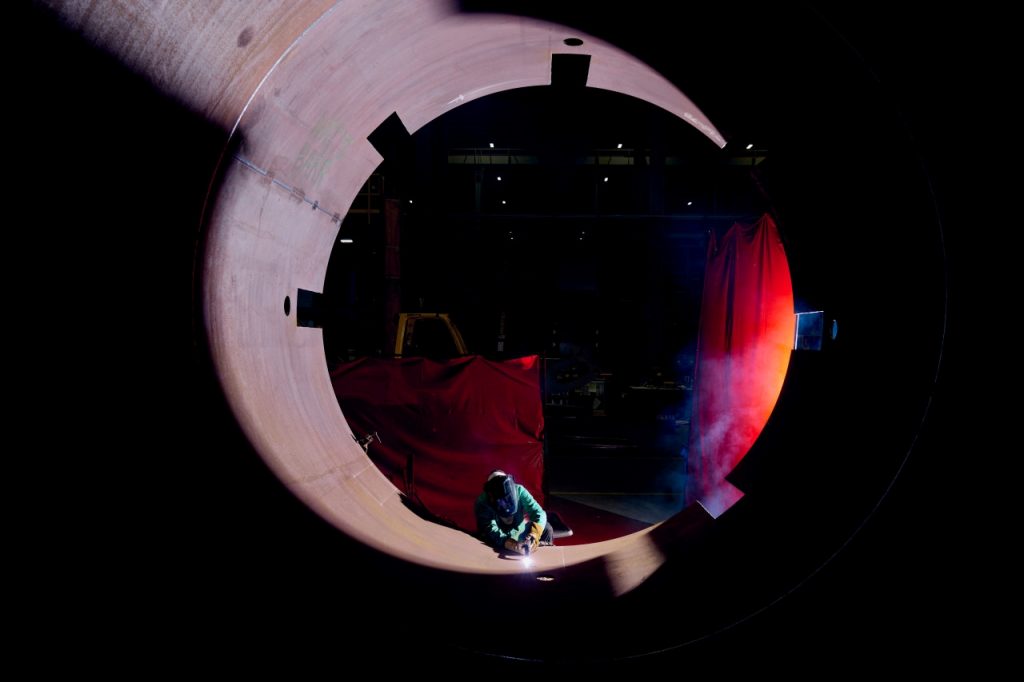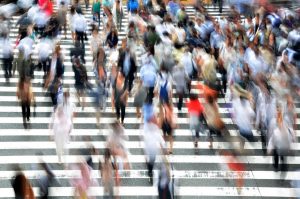BEFORE JUMBO JETS and social media packed tourists into Hawaii as tight as a school of akule —the big-eyed scad ubiquitous in Pacific waters—the state was idealized for its slower, more intentional way of life. And Honolulu was its capital of cool.
Mark Twain, Isabella Bird and Jack London all fell under the city’s spell, as did tobacco heiress Doris Duke, who stunned high society by temporarily settling down in Honolulu in 1935, and embedding with Duke Kahanamoku’s clan of surfers and fishermen. Most Americans, though, enjoyed the fantasy from afar through movies and songs.
That gentle vibe couldn’t last. After 1960, the crowds descended, travel agents packaged the experiences and buses rolled away from Waikiki Beach resorts like clockwork. Stop, pile out, take a picture and move on—it’s a drill, reproducing the very stress visitors are trying to escape.
We who live on Oahu feel the pressures of commerce, too. But we also know where to find the vestiges of that more elusive, unslick Hawaii. Here, four walkable circuits outside the resorts that capture Honolulu at its most laid-back.
Diamond Head:
Where the Volcano Is Only Part of the Appeal
Perhaps more than anyone, King David Kalākaua ushered in modern Hawaii, reversing in 1874 the strict missionary ban on hula and recentering Hawaiian language and culture. The “Merrie Monarch,” as he was known, often held luau, celebratory dinner parties, above Honolulu’s Kaimana Beach, a golden stretch of sand. Make your base the Kaimana Beach Hotel on the edge of 200-acre Kapi‘olani Park, just a mile from Waikiki’s madding crowds but worlds apart.
Walk through the hotel’s airy lobby for breakfast at the beachside Hau Tree Restaurant, shaded by the same hibiscus grove that, in an 1889 photograph, hangs above King Kalākaua and Robert Louis Stevenson as they sit drinking wine.
In a city of cars, long walks serve as the go-to de-stressor for Honolulu residents, and many swear by this 4-mile loop of the city’s famous volcano, Diamond Head. To begin, follow Diamond Head Road along the coast and uphill, watching the water for surfers and migrating humpback whales. After continuing on for half an hour, look for a large tunnel that will take you to the crater floor. Take a photo. However, consider skipping the celebrated, but perpetually gridlocked, hike to the rim.
Instead, if it’s Saturday morning, check out the Kapi‘olani Community College Farmers Market by continuing down Diamond Head Road. Afterward, follow it as it becomes Monsarrat Avenue back to sea level. On the way, assemble a picnic at Diamond Head Market & Grill , which makes its wasabi shoyu ahi steak sandwich with auction-fresh tuna; grab a slice of lilikoi (passion fruit) cheesecake, too. A half-block down, the Kealopiko boutique specializes in hand-printed local patterns in striking colors and, at ARS Cafe , a strong latte (with a side of air conditioning) awaits.
Chinatown:
Underbelly No Longer
Honolulu’s Chinatown, established in the 1840s, was long known as a place where you could find everything from noodles and roast duck to gambling dens and brothels. Now a 36-block Historic District, Chinatown doesn’t hide from that past. Hear all about it every Wednesday and Friday on walking tours by the Hawaii Heritage Center . Or explore on your own. Amid its open markets, theaters, tattoo parlors and hipster hangouts you might glimpse hints of old illicit habits, but you’ll mostly find good shopping and even better eating.
As you peruse Maunakea Street’s open stalls, grab a poke bowl at Maguro Brothers and buy a garland at Cindy’s Lei & Flower Shoppe . Up on Nuuanu Avenue, designer Roberta Oaks makes bold shirts and skirts that will widen eyes back home with their precise tailoring and brilliant colors. Fighting Eel , another top designer, just a block away, does sleek fabrics in mesmerizing op-art patterns.
These days, Chinatown is where downtown denizens eat lunch—for good reason. The James Beard-winning Fête is home to chef Robynne Maii ’s adventurous take on American-Asian fusion. Olay’s Thai-Lao Cuisine hawks fragrant salads and heaping plates of spicy noodles in a courtyard with koi ponds and waterfalls. At O’Kims Korean Kitchen , you’ll find truffle mandoo and Korean fried chicken.
A five-minute walk east on Hotel Street will take you from Chinatown to King Kalakaua’s Iolani Palace , where an immersive tour outlines the history of the Hawaiian monarchy. Across King Street, the Hawaii Mission Houses , now a museum, tells the story of the tiny band of missionaries who plotted their takeover of Hawaii’s royals via religious conversion and marriage.
At the nearby beaux-arts Honolulu Museum of Art , check out the “Fashioning Aloha” show (April 12 to Sept. 1), which documents how the Hawaiian shirt came to be, what it symbolizes and how it has been adopted—and appropriated—around the world.
For the boys of World War II straight off the farm, Hawaii was the “First Strange Place”—the title of a book that chronicles how Hawaii, a stopover for young men heading to war, changed minds. Many took home from Hawaii a vision of an interracial society that not only wasn’t segregated but freely intermarried.
With that in mind, end your day back in Chinatown with a liquid salute to those who came before at Smith’s Union Bar , the oldest in Hawaii, and the “official” watering hole of the USS Arizona, sunk at Pearl Harbor. After all, Smith’s might have been the exact spot where one of your relations knocked back a shot of rye before shipping off to Tarawa.
Kaimuki:
Lived-In Honolulu
Honolulu locals gravitate to Kaimuki, a neighborhood built in the early 20th century between Diamond Head and the Koolau Mountains, for its untouristy vibe.
Brunch enthusiasts should start at Lee Ann Wong’s Koko Head Cafe where any order must include the savory scone (topped with cheddar, bacon, kimchi and a dollop of crème fraîche) and the Breakfast Bibimbap Skillet. Nearby at Mud Hen Water , Ed Kenney champions Hawaiian cuisine with inventions like a twist on a Maine lobster roll, made with grilled he‘e (octopus) on a buttered hoagie. For an on-the-go snack, visit the Kaimuki Crack Seed Store and buy a bag of li hing mui , traditional salty-sour preserved plums, originally from China.
For a culture fix, the Movie Museum screens the best of world cinema while fashion boutique Ten Tomorrow makes locally inflected designs, including made-to-order pieces. At Yoga Under the Palms , take a class on a rooftop so dense with vegetation you’ll feel like you’re in a jungle.
Koko Crater:
A Fantastical Detour
For a spectacular, laid-back nature walk, grab a cab east of downtown to the Koko Crater Botanical Garden , a fantasia of desert flora inside a volcanic crater. Sci-fi fans will especially enjoy wandering these 60 acres of surreal life-forms, most of them rare and endangered, from Africa, the Americas and Hawaii. Warning: The warping of perspective as you stroll up to a giant cactus can leave you dizzy—as can the heat, so when we say bring plenty of water, we’re not kidding.


